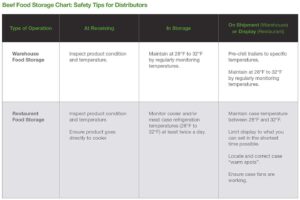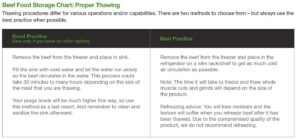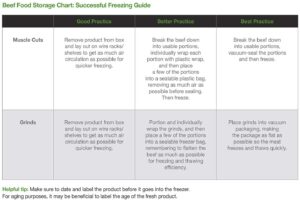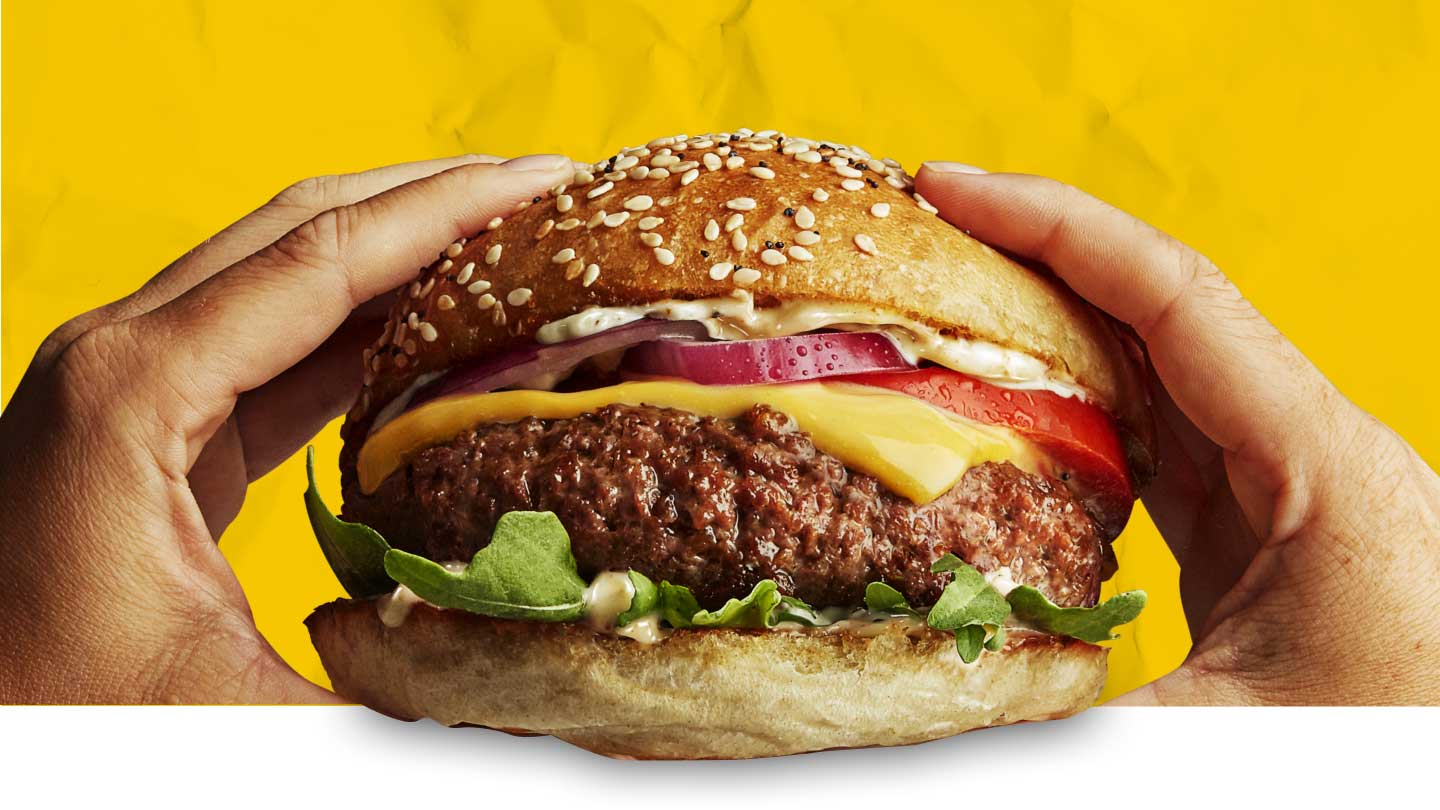Manage Safe Inventory with This Boxed Beef Food Storage Chart
Serve safe, quality products with these safe handling and freezing tips.
If you’re in the food industry, you know nothing is more critical than safety and quality. And much of it comes down to how you store your meats. Fortunately, you can freeze beef to ensure it stays safe and in optimal condition for a longer amount of time while also growing your operational efficiency.
According to Cargill Chef Pete Geoghegan, “Freezing is not your enemy. You can rely on freezing to control costs and manage the aging of your beef. You will always lose some moisture (purge) during the freezing/thawing process, but if done correctly, the loss will be minimal. Whole muscle cuts will actually gain some tenderness during this process.”
Freezing comes with its advantages and disadvantages, but the pros typically outweigh the cons.
Freezing Pros:
- Cost and age control
- Increased tenderness
Freezing Cons:
- Moisture loss (minimal 2-3% using our tips for success below)


Tips for Restaurant Food Storage
Freezing and thawing of vacuum-packaged beef (subprimals and ground beef chubs)
Supply chains can maintain product quality and safety by properly freezing and thawing products. Below are some key points to consider when freezing your beef.
Optimal frozen storage temperature:
Keep your freezer at <0ºF.
Length of time in freezer for optimal quality:
Keep beef products frozen for less than one year.
Fresh shelf life after freezing:
Fresh age temporarily stops while the meat is frozen, then resumes once thawed. For example, Cargill guarantees a 42-day fresh shelf life for boneless vacuum-packaged beef. If you were to freeze the beef on day 20 of its fresh shelf life, you could expect 22 days of remaining fresh shelf life once thawed.
Freezing process:
You want to freeze your beef as fast as possible. A few boxes will freeze much quicker and more easily than a pallet product.
Thawing process:
Always thaw under meat case refrigeration – preferably at 35-38ºF. Similar to freezing, a few cases are easier to thaw than a pallet. The increased airflow will speed up the thawing process. Keep in mind that it will take at least three to five days to fully thaw the product under refrigeration – and timing also depends on spacing.
Quality implications:
You can expect an increased amount of purge on most items after thawing (approximately 2-3% more purge than normal). However, for most products, the quality is still deemed acceptable after proper freezing.
Labeling implications:
None, unless the foodservice establishment has menu wording such as “fresh, never frozen” or “always fresh.”
Food safety implications:
Fortunately, there are no incremental issues around safety implications, provided the product is stored correctly. Use the safety tips for distributors below to ensure safe storage.

Cargill’s Cold Chain: A Profitable Solution to Extend Freshness
When it comes to ground beef, a few critical degrees of cold can have powerful repercussions on your bottom line. Cargill follows a rigorous cold chain from start to finish to ensure customers receive beef products as close to 32°F as possible.
Keeping ground beef at cooler temperatures ensures longer shelf life and reduced shrink for customers. Cargill’s cold chain is designed to remove latent heat – the heat or energy that exists naturally within any substance – throughout the production and delivery process. Cargill achieves more consistent temperatures by:
- Using carbon dioxide to keep trim and ground beef cooler.
- Carefully monitoring loading techniques to ensure even temperatures.
- Maintaining prechilled trailers at precise temperatures to uphold the cold chain.
What to Keep in Mind After Receiving Cold Chain Products
The cold chain is dependent upon time and temperature – so it’s important to control both. A product that reaches a temperature of 45ºF for a few minutes is no longer considered safe for consumption. However, it’s even more unsafe to store a product at 42ºF for 12 hours.
- The optimal zone for bacterial growth is between 40°F and 140°F.
- Keep all storage and meat case refrigeration temperatures below 40°F.
- Best practices recommend storage temperature at 28°F to 32°F.
- Every 3-degree rise in temperature above 40°F reduces the shelf life by one-half.
- Bacteria reproduce by doubling their numbers every 15 to 20 minutes with proper. nutrients, moisture and protein found in beef and favorable temperatures.
- Improper product storage relating to temperature is a contributing factor for approximately 40% of food-borne illness outbreaks, according to the Centers for Disease Control and Prevention.
Cargill’s Cold Chain Management Color Benefits
Using a Minolta colorimeter, Cargill researchers evaluated the effects of various storage and display temperatures. Several studies show the consumer preference and perceived freshness of bright cherry-red color in ground beef.
The American Meat Science Association developed the color scale used in the evaluation of ground beef’s freshness. Using a score of 5.0 as the color level at which ground beef must be discounted and 4.5 as the level at which it must be discarded, we discovered that storage and display at 32°F extends acceptable coloration up to 48 hours.
Safeguard Your Customers
On average, ground beef remains out of refrigeration for 64 minutes between removal from store display and placement in home refrigeration. An hour can be a long time in terms of rapid microbial growth, and an initial temperature of 32°F coming out of your display case becomes more and more valuable with each passing minute. Cold chain management aids in inhibiting microbial growth, a significant step in fighting foodborne illness.
Whether or not you’re using a cold chain program, delivering safe products isn’t just a moral obligation. It’s critical to your store’s reputation. Food safety takes producers, suppliers, distributor partners, retailers and foodservice operators working together and holding each other accountable for success.
By following the tips outlined above, you can store your boxed beef with confidence and continue serving your customers safe, reputable, high-quality products.
More articles
Close
Find your distribution center
Enter your ZIP code and we’ll track down the right distribution center for you.

